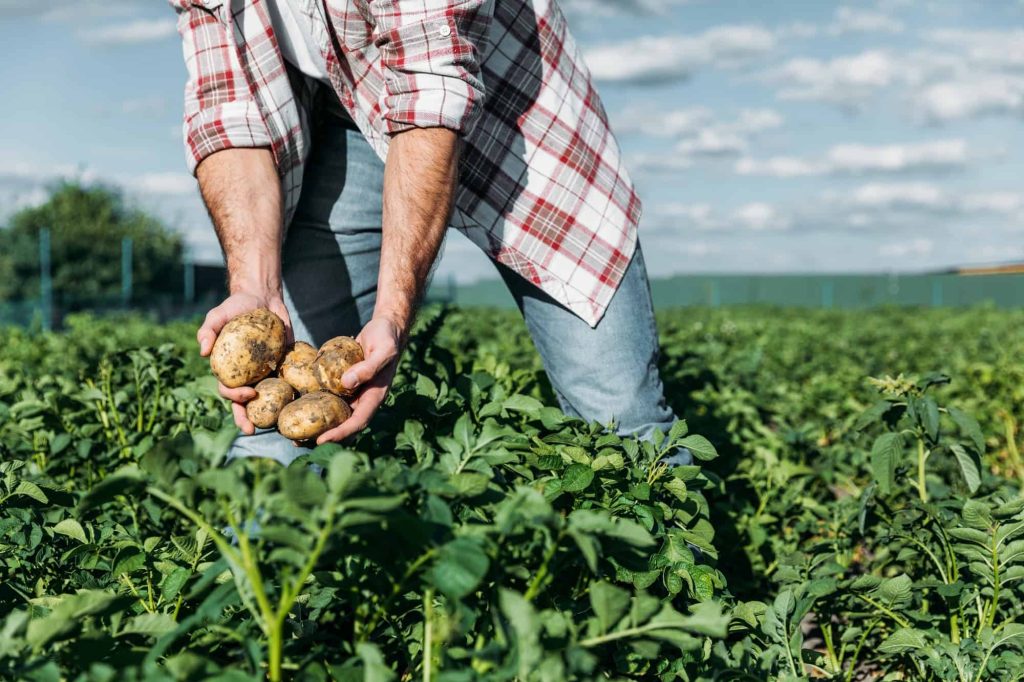Growing potatoes is very easy especially if you are the type that prefers homegrown crops. All you need do is provide the potatoes with a healthy environment. One effective way to do this is by choosing the best companion plant for the potato plant and growing them nearby.
It’s a no-brainer that certain plants tend to grow better when they have a companion, the right companion plants. What this means is that they produce a better yield when cultivated with other plants.
Some of the best companion plants to grow with potatoes are beans, chamomile, basil, cabbage, parsley, sage, thyme, onions, sweet corn, and horseradish. Potatoes make excellent companions with plants in the cabbage family and work with most herbs as well. It is best not to plant potatoes with plants such as tomatoes, raspberries, cucumbers, and squash.
Potato is a staple crop that grows in temperate regions. If you want to boost your potato cultivation, you must understand that there are better ways than growing it in isolation. Growing it with the best companion plants will improve its ecosystem and repel pests that can cause damage to the plant.
Companion planting doesn’t only increase the yield of your crop but also benefits the soil by adding nutrients to it. They provide mulches and shade to your potato plant where needed.
12 Best Potato Companion Plants
Some herbs, vegetables, and flowers make good companion plants for potatoes. They provide a better growing environment, improve their flavor, and eliminate pests and diseases.
1. Basil
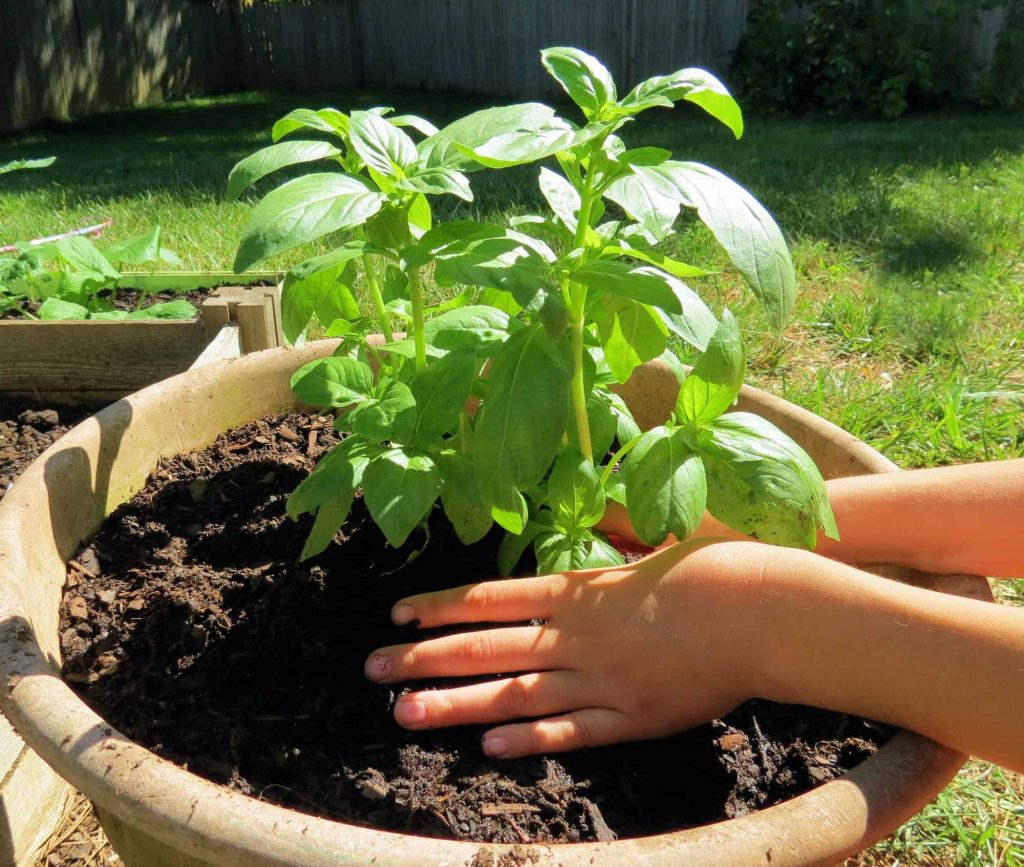
Basil is a herbaceous plant and comes highly recommended. It is one of the most compatible companion plants for potatoes. It is known to prevent beetles, aphids, and other pests from damaging potatoes. It goes well with strawberries too.
2. Marigolds
Are you aware of the magic flowers perform as companion plants? One major advantage of planting flowers with any crop is its pollinating property. Flowers attract pollinators to your plants and this helps them produce better fruits. Marigold doesn’t only help to pollinate your potato but also wards off pests using its scent.
It gets rid of eelworm which can cause damage to your crop and prevents it from getting diseased by bacterial and viral infections.
3. Chamomile
When choosing herbaceous plants for your potatoes, don’t leave out Chamomile. It also releases a strong scent like marigold which keeps pests at a distance but also attracts beneficial insects. It’s a colorful flower that gives an attractive look to the vegetable patch. It has an apple flavor and improves the flavor of potatoes. The flowers of chamomile can be used in breweries.
4. Parsely
If you want your garden to smell good, Parsely is the best plant to choose. Plays the role of improving the taste of your potato as well as beneficial insects.
5. Cabbage
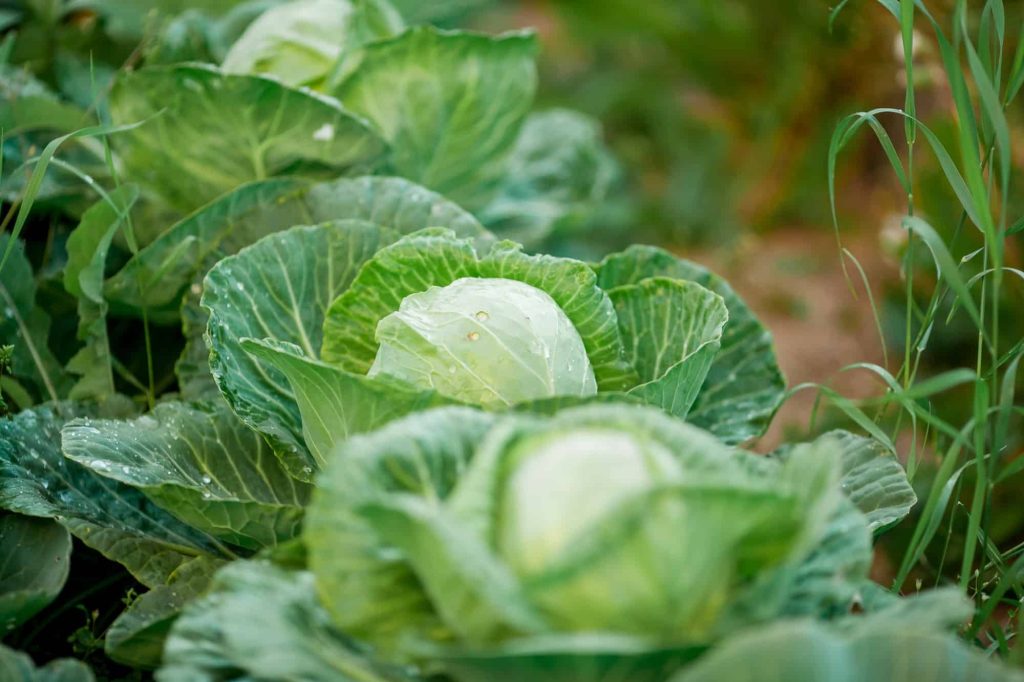
Broccoli, kale, and cauliflower which belong to the cabbage family are classified as one of the best companion plants for Potatoes. They don’t compete with Potatoes for nutrients because they have shallow roots.
6. Beans
Cover crops will always be on the list of suitable companion plants for most plants because of the number of nutrients they add to the soil. Legumes add nitrogen to the soil that will benefit tuber crops like Potatoes. Nitrogen boosts the yield of potatoes.
7. Sage
Instead of buying pesticides, grow enough Sages. Sage helps to control pests and welcomes pollinators to your potato plant. It also stimulates the growth of your tuber crop and produces a healthy Harvest.
8. Peas
Peas just like beans add nitrogen to the soil and act as a source of shade for the potato plant during warm temperatures. Shades help to conserve the moisture of the soil and keep the nutrients intact. This way, the potato will sap nutrients and yield better.
9. Thyme
Thyme is a home for pollinators. It releases a nice fragrance that attracts bees to it and keeps flea beetles far away. Companion plants with nice scents improve the flavor of the neighboring plant. In this case, it improves the flavor of the potato and also acts as a source of shade.
10. Onions
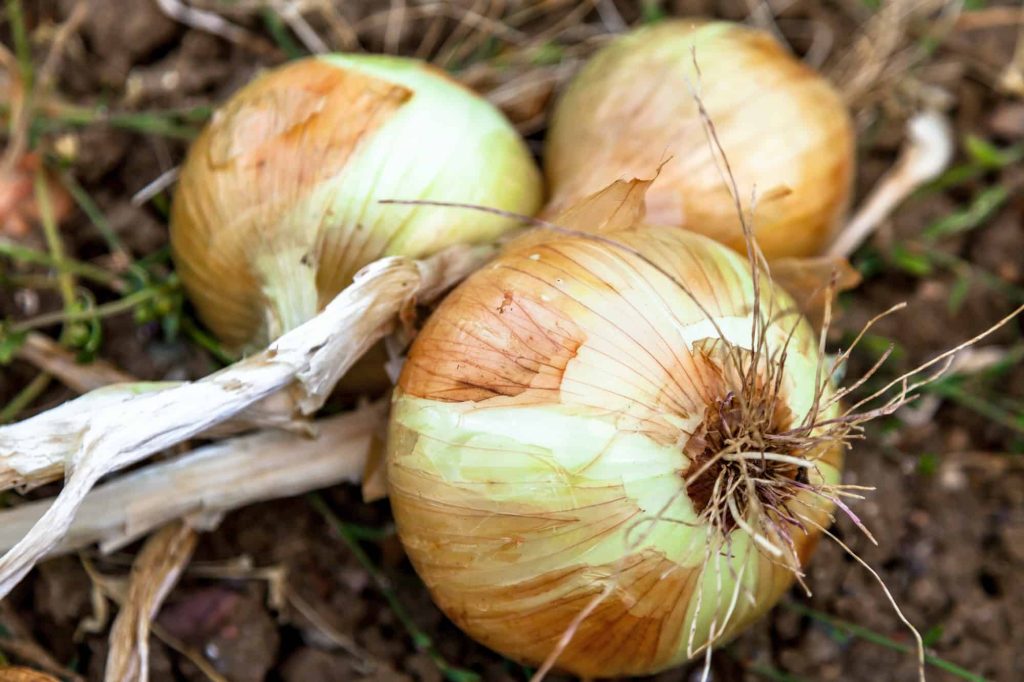
11. Horseradish
Horseradish which is a member of the Brassica family has a lot of benefits to offer potatoes. Unlike other root crops, horseradish is considered the most suitable for Potatoe, it improves the pH of the soil, repels diseases, and potato bugs, beetles, caterpillars, aphids, and other pests that can cause great harm to the potato. It’s considered one of the best root companion crops because it not only protects Potatoes but also adds to their flavor which is a plus for it.
12. Sweet corn
As the name implies, it adds some flavor and improves the taste of the potatoes. Plant sweet corn in between your potatoes as it doesn’t use up much space and gives it a breathing space while acting as a shade for your tuber crops.
Allium plant family will always be a good companion for any crop potatoes inclusive. The pungent scent it releases will scare away any form of pest whose intention is to destroy the potatoes. Always consider onions while deciding on the companion plant to grow.
What Not to Grow Near Potato Tubers
Being aware of the plants to avoid is as important as learning about the plants to grow. The two go hand in hand and can’t be ignored.
1. Cucumber and squash
If you have ever heard of squash, then keep it far away from your potato as well as cucumber. They can also infect your potato with blight and will compete for nutrients with your tuber crop. Take note of these plants and avoid them.
2. Tomatoes
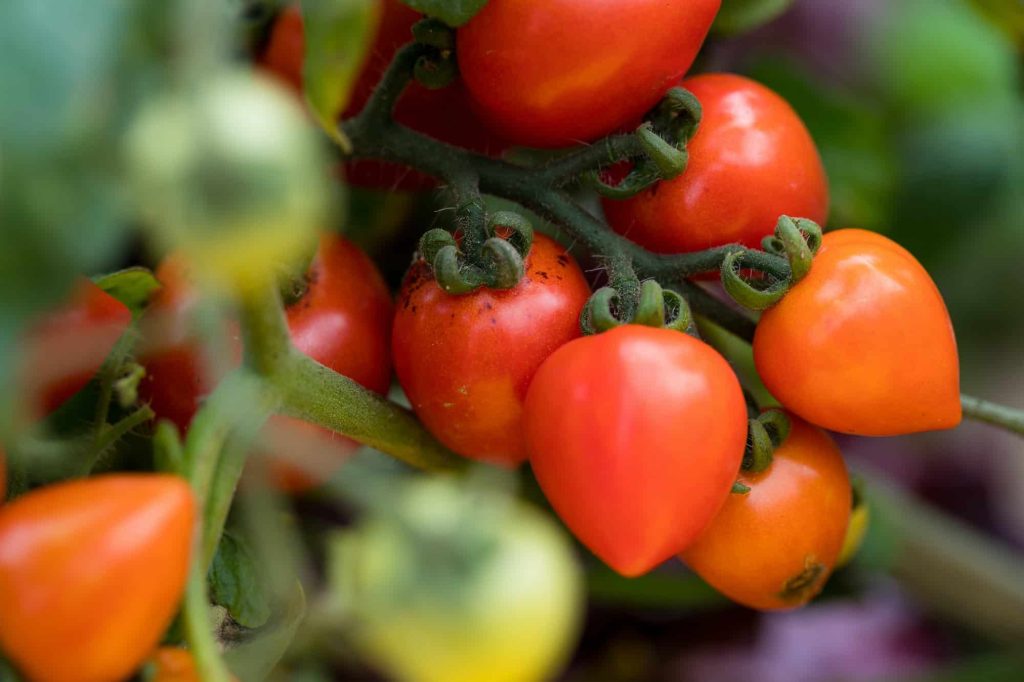
Tomatoes and potatoes belong to the same family which is the family of nightshade. Other plants that belong to this family are peppers and aubergine. They attract similar diseases. For instance, potatoes can get infected by a fungal disease known as blight as well as tomatoes. The proximity of these two crops can cause the disease to spread. It’s very dangerous to grow them close to each other.
3. Raspberries
Cucumbers and the family of nightshade aren’t the only plants that can spread blight. Raspberries fall into the category of plants that can infect your potatoes with this fungal disease.
4. Asparagus
Asparagus is a no-go area for potatoes. It can cause stunted growth and reduce the nutrients the potatoes are supposed to feed on to look healthy. This is a result of the extensive roots the asparagus plant possesses. When it’s time to harvest, you will be amazed at the damage it would have caused.
5. Fennel
Some plants secrete chemicals that act as growth inhibitors to plants. These plants are known as Allelopathic plants. Fennel falls into this category of plants. No need needs to say much for you to understand how dangerous these plants are to your potatoes. Once the chemical is secreted into the potato, it will result in stunted growth.
6. Sunflower
Flowers are sources of pollinators for plants and pest repellants but not sunflowers. An attempt to grow sunflowers close to your potatoes will cause their death. It releases Allelopathic chemicals that can hinder the growth of your potato.
Companion planting guide for Potatoes
There are several tips to take note of if you want to get a good harvest of potatoes. They include;
- When considering the right potato seeds, get from a reputable source
- Consider getting a shade for your first early potatoes
- Gardeners recommend the use of a liquid comfrey fertilizer for your potatoes
- You can make use of compost (comfrey leaves) in place of fertilizer
- Never grow potatoes on separate beds. Make sure you cultivate it with a companion plant
- Avoid growing Allelopathic plants with your potatoes.
What can you plant next to potatoes?
Any plant that adds nitrogen to the soil. Examples of companion plants that add nitrogen to the soil are beans, green peas, or any other type of legume. Other companion plants include Basil, Marigold, Chamomile, Parsley, thyme, sweet corn, onions, garlic, and any companion plant that belongs to the Allium family because of its pungent smell that wards away pests
What should not be planted near potatoes?
Allelopathic plants should be kept far away from potatoes. They hinder the growth of plants. Examples are sunflower and fennel. Other companion plants that should not be found close to potatoes are; tomatoes, raspberries, cucumbers, and squash.
Do tomatoes and potatoes grow well together?
Growing tomatoes and potatoes together is a no-no. They belong to the same family and attract similar diseases like the blight disease which can spread to the potatoes if they are planted close to each other.
Can you plant garlic and potatoes together?
Garlic can be planted with potatoes because it releases a scent that keeps pests far away from the potatoes.
Can I plant cucumbers next to potatoes?
Cucumbers should not be grown with potatoes because they will compete with the potato for nutrients.
Final thoughts
Growing potatoes is not a complicated task even though it looks like it is. With the right knowledge about the best companion plants to grow with it, you will save yourself a lot of stress and prevent diseases and pests that will reduce the yield of the tuber crop.
More companion planting ideas:
- 13 Raspberry Companion Plants (What Not to Grow Near Raspberries)
- Strawberry Companion Plants (What Not To Grow Near Strawberries)
- Blueberry Companion Plants (What Not To Grow Near Blueberries)
- Tomato Companion Plants (What Not To Grow Near Tomatoes)
- Pumpkin Companion Plants (What Not To Grow Near Pumpkins)

